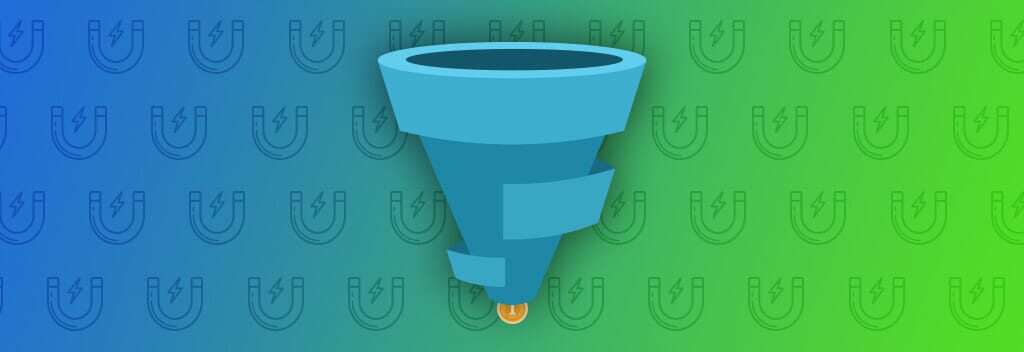There has been much debate among B2B salespeople on what an inbound lead looks like:
- Is it someone completing a contact form?
- Downloading a case study?
- Signing up for your company email newsletter?
With inbound leads to your B2B website, there are conversions that are more sales-ready leads and there are some conversions that require nurturing.
However, all conversions from the website must be defined as leads, some are just more sales-ready than others—it all depends on where they are in the sales process.
Let’s discuss the different levels of the sales and marketing funnel.
Top of the Funnel
Top of the funnel sales leads are passive leads coming from the website—visitors signing up for an email newsletter, downloading a piece of thought leadership content, etc. These conversions are coming from indirect CTAs in the website—these people are not directly expressing interest in your product or service but are willing to volunteer contact information to access a piece of content.
Top of the funnel leads need to be handled with finesse, but they are still leads! Email newsletter subscribers should not be contacted except through the ongoing email newsletter that they signed up for.
However, visitors who download content like white papers, guides, resources, etc. need to be treated like viable, promising leads. Someone at your organization needs to be held responsible for nurturing and closing these leads. With content downloads, it is important to build a case of credibility through more relevant content. For instance, if a visitor downloads a guide on selecting the right accounting firm, a sales or marketing person should manually follow up with content related to that original content download, such as a blog related to accounting best practices or an accounting case study related to the prospect’s industry.
Read more: Why the sales team ignores or mismanages leads.
Middle of the Funnel
Middle of the funnel sales leads demonstrate more buying intent than top of the funnel. These leads are website conversions like a case study download, video demo request, etc. These conversions may not be ready for a direct sales conversation just yet, but they are close and need to be treated as serious leads.
Unfortunately, these are the B2B website leads where there is the most debate about their worthiness. Case study downloads need to be acknowledged as worthy of a salesperson’s time! Reviewing case studies are indicative that someone is seriously considering a sales discussion and your company is on the shortlist. The best way to follow up with a case study download is not to go right “for the jugular” and request a call. Instead, follow up with more content relevant to that prospect’s industry. Follow up with relevant blogs, example projects related to the industry, etc. Do not request a call right away, wait at least 2 more emails before requesting a call—unless the recipient requests one.
Read more: Your B2B website & sales – a dynamic duo.
Bottom of the Funnel
Believe it or not, we have a tough time convincing salespeople that inbound leads are worthwhile. The bottom of the funnel website leads are website visitors directly requesting a consultation, phone call, office visit, etc. I will argue that these leads are superior to most other leads because an inbound lead does not need to be convinced that they need your product or service—they already know and want to be sold! In light of COVID-19, inbound leads may be the only leads coming in and each one needs to be treated with care and thoughtfulness.
Treat each bottom of the funnel inbound lead like it’s your last and only opportunity. This type of thinking ensures you are aggressive, attentive, and creative with the way you approach that prospect’s needs and objectives. For the near future, inbound leads will be the most sales-ready and are the pinnacle definition of an inbound lead. Make sure to qualify them upfront on budget, timeline, expectations, etc., but don’t make the experience too qualifying and prohibitive. As you qualify, ensure that you are building value at every touchpoint. Building value through thought leadership content, sample work, testimonials, references, etc.
Be Attentive to Your B2B Website Leads
B2B leads are really anyone volunteering their contact information through your B2B website and we need to treat each one seriously and with a positive mindset—especially in light of the COVID-19 pandemic.
If you approach every lead with an optimistic attitude, you are more likely to close that lead. Being upbeat will transform more B2B leads into clients!



